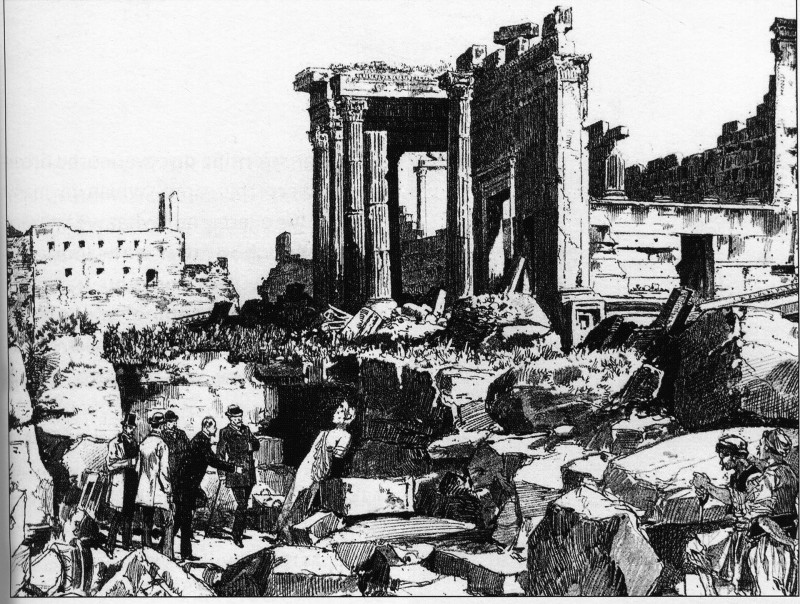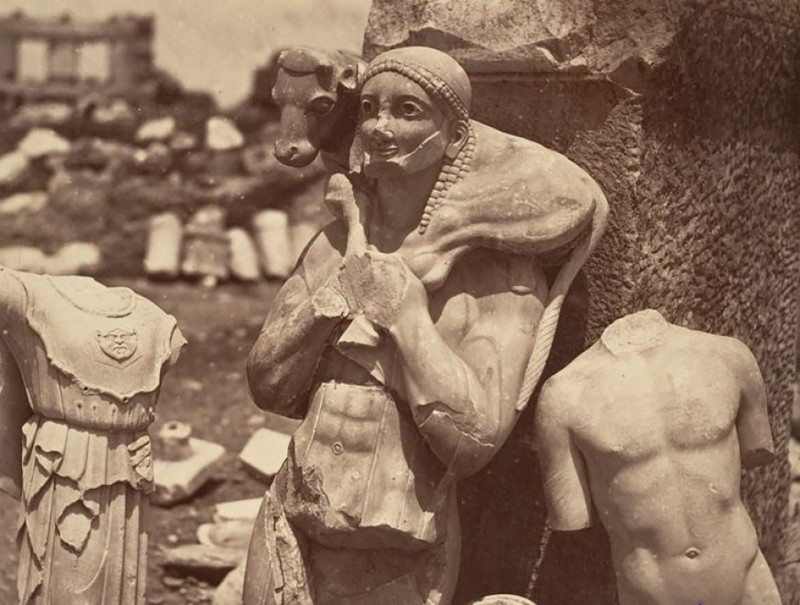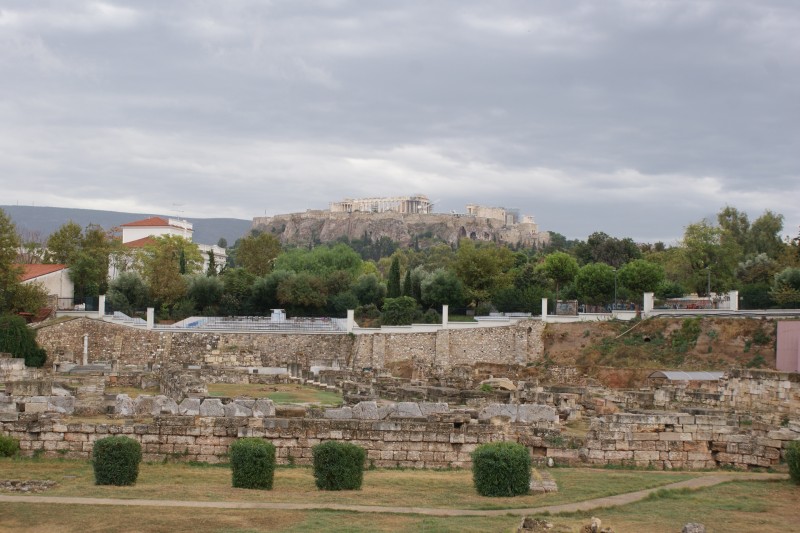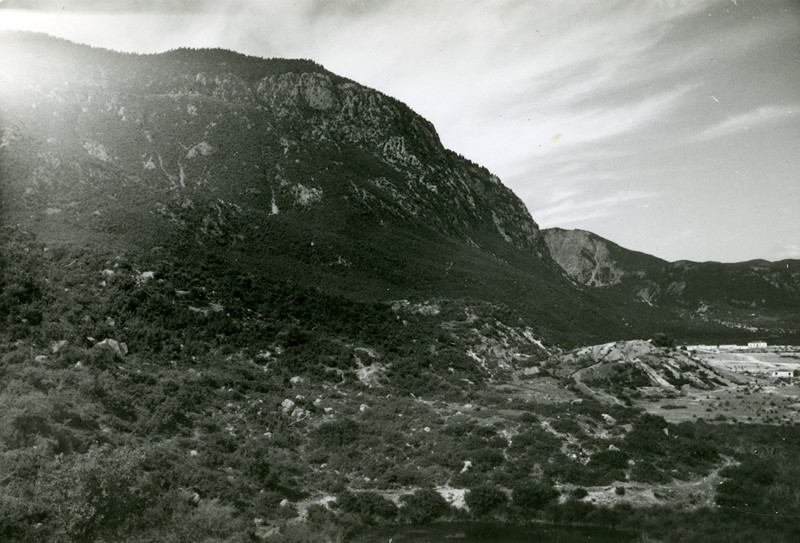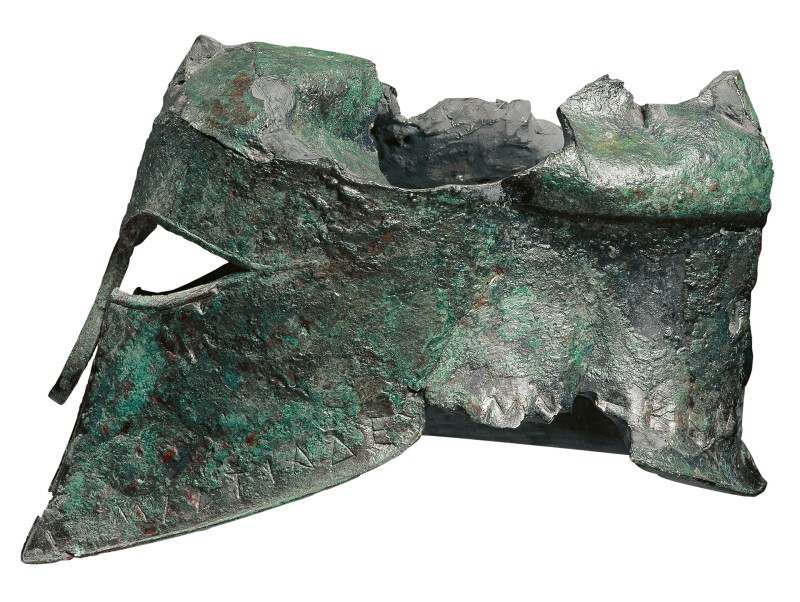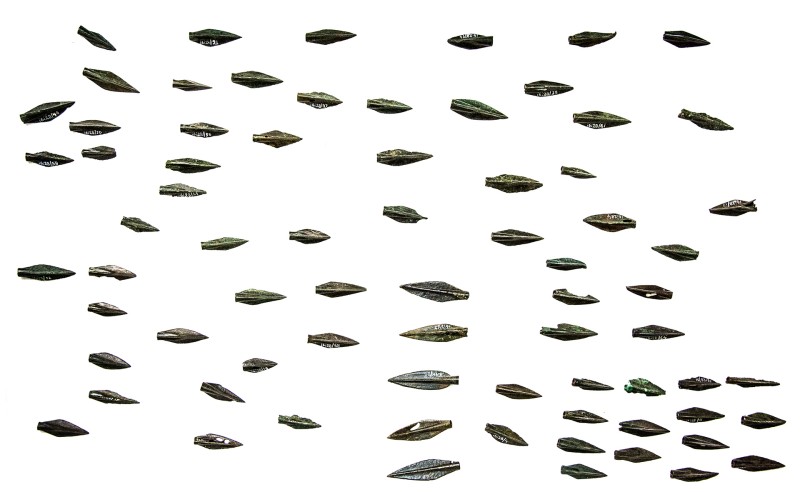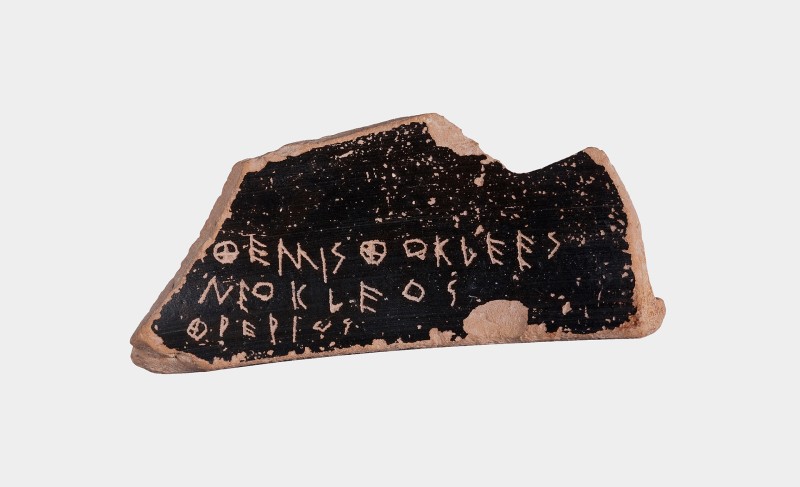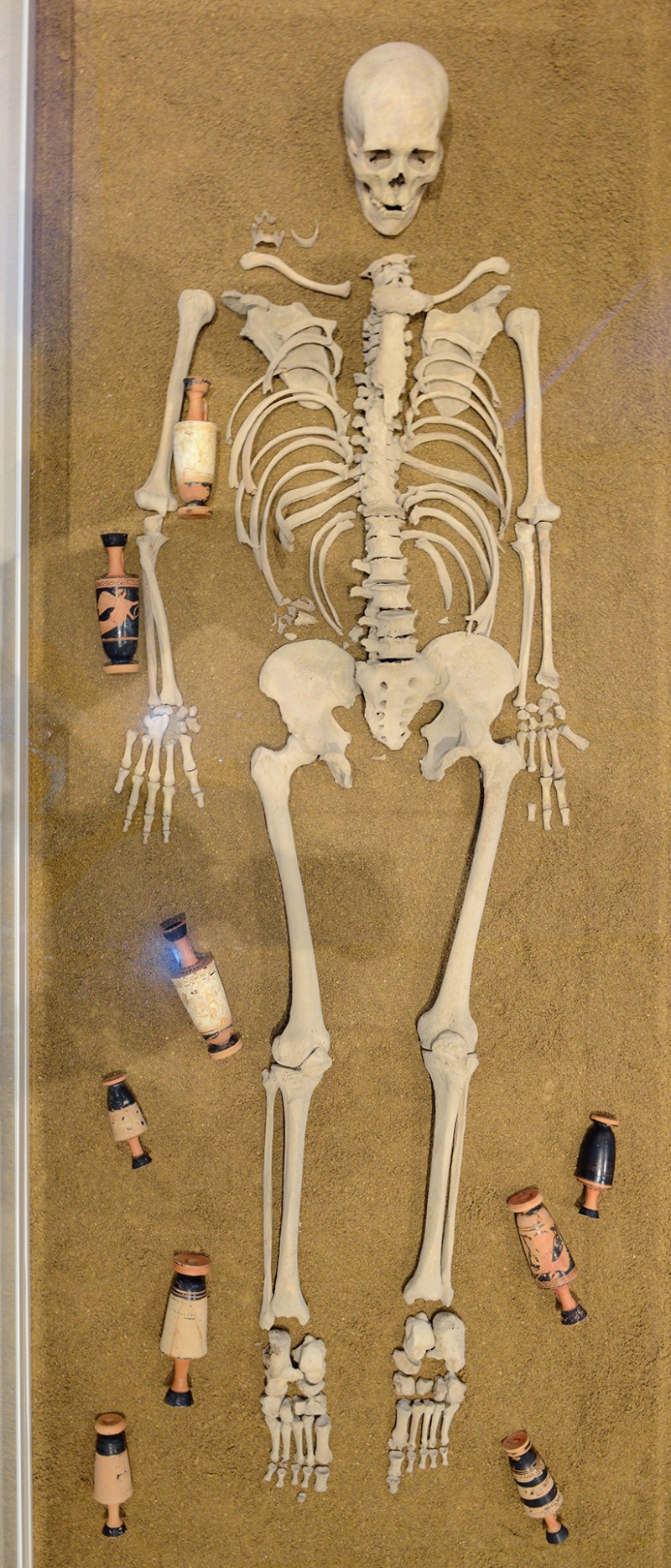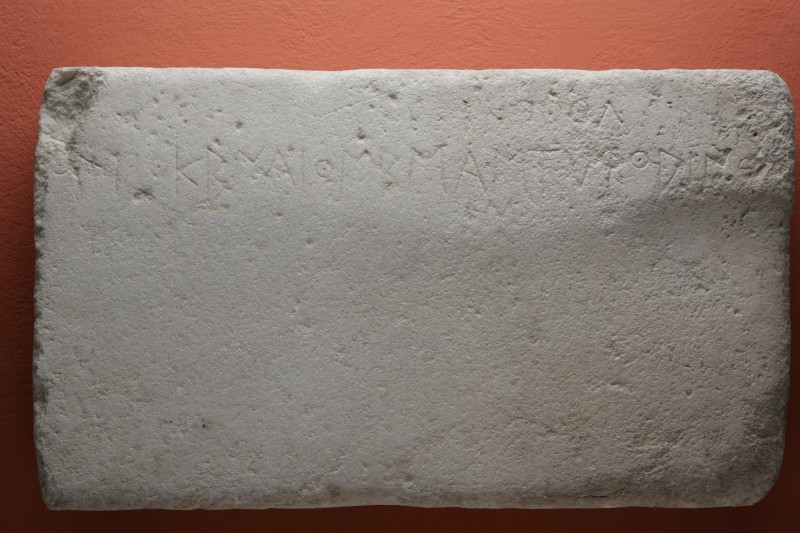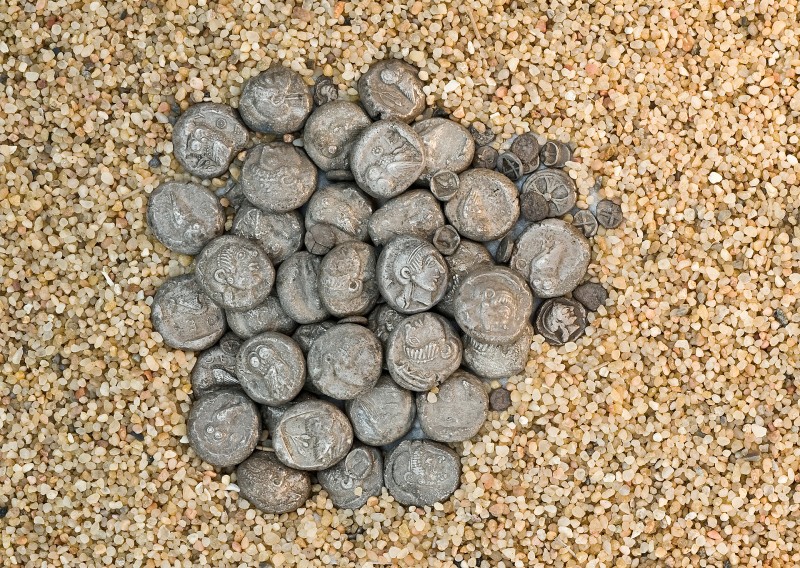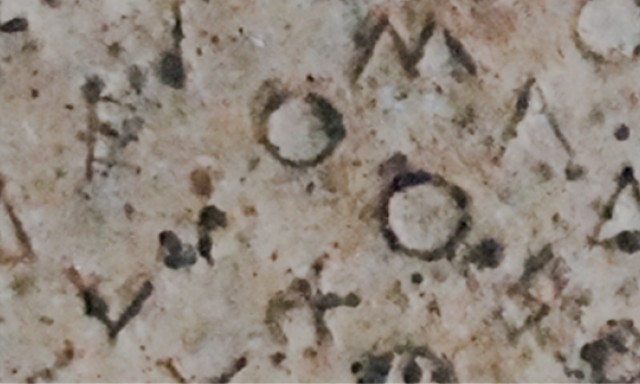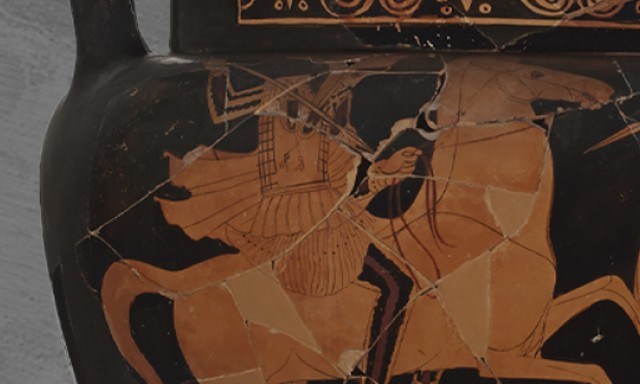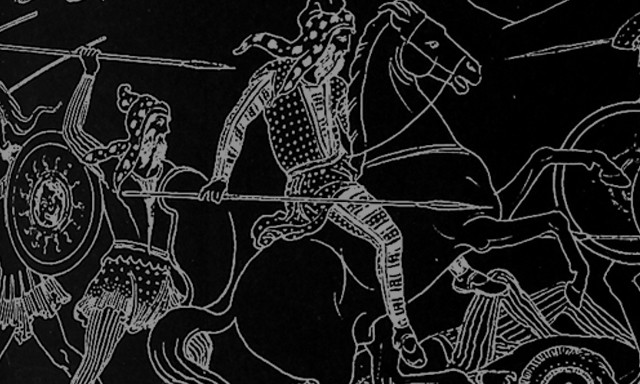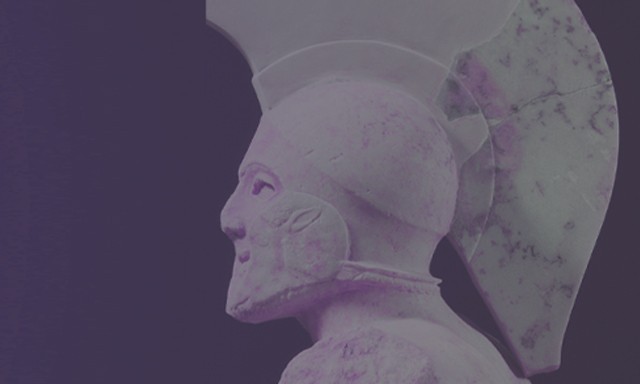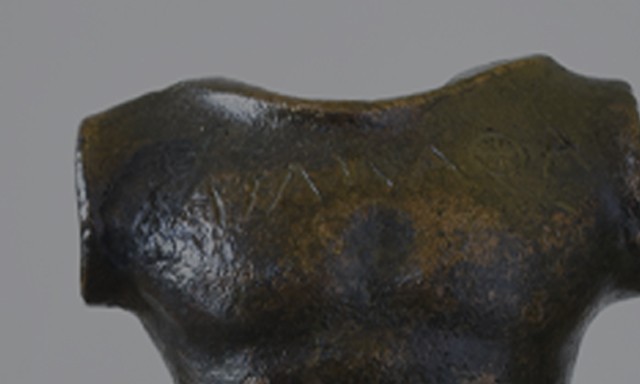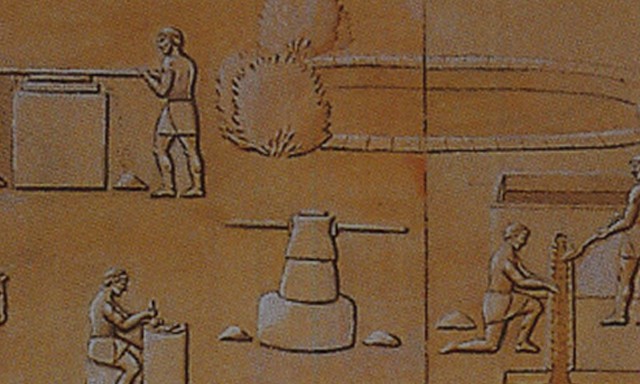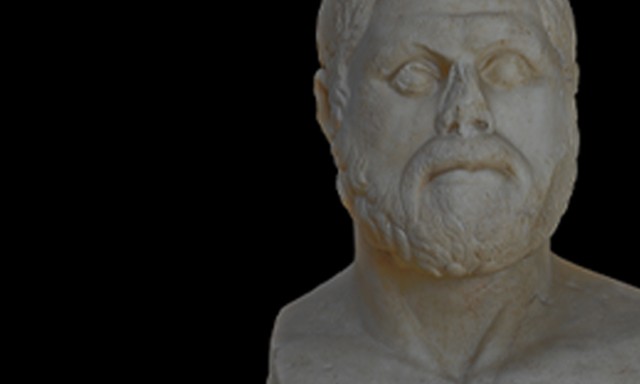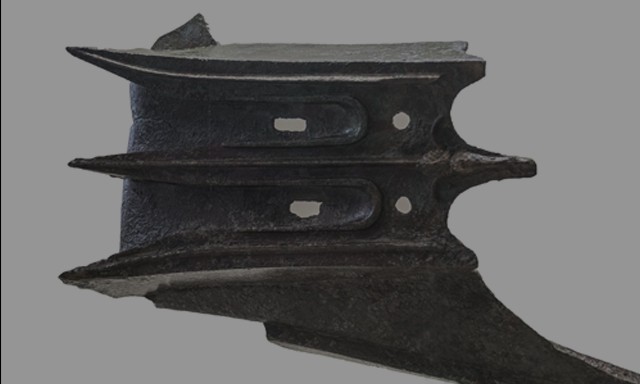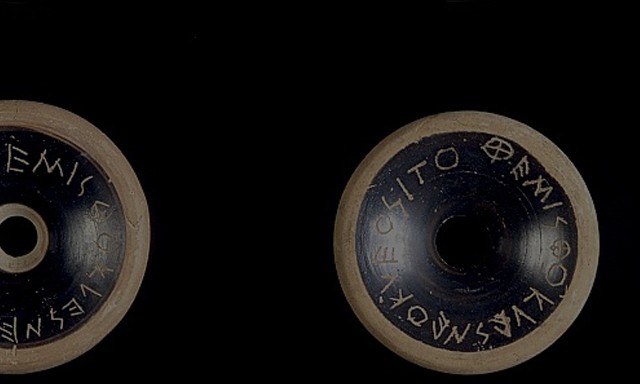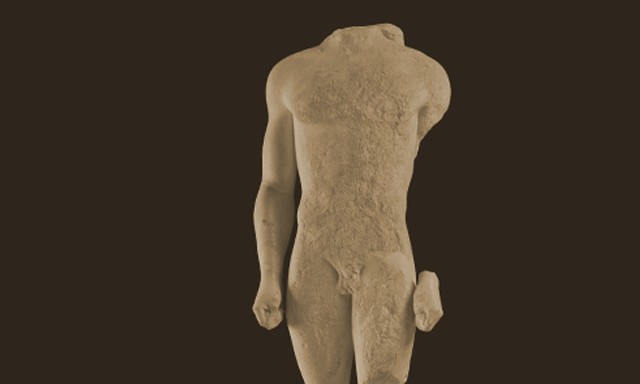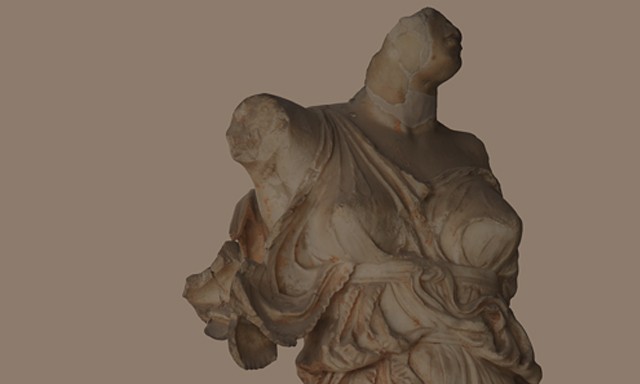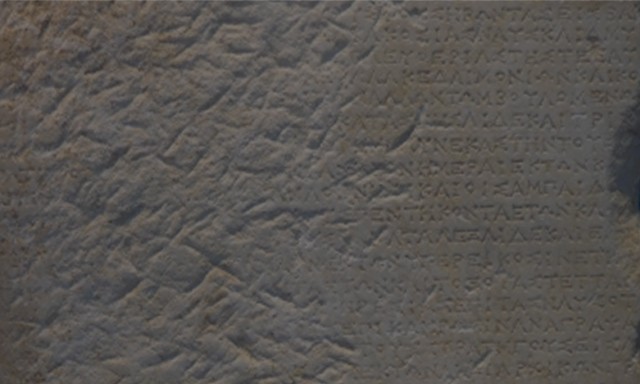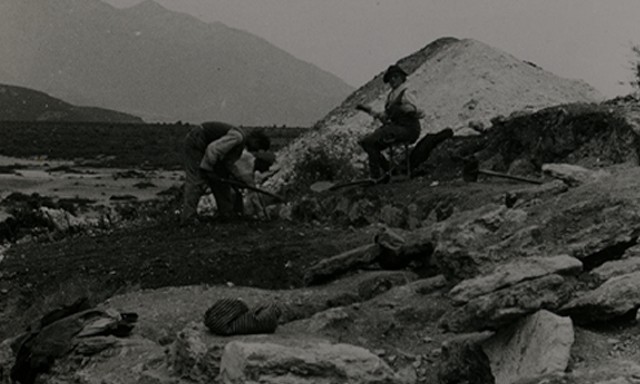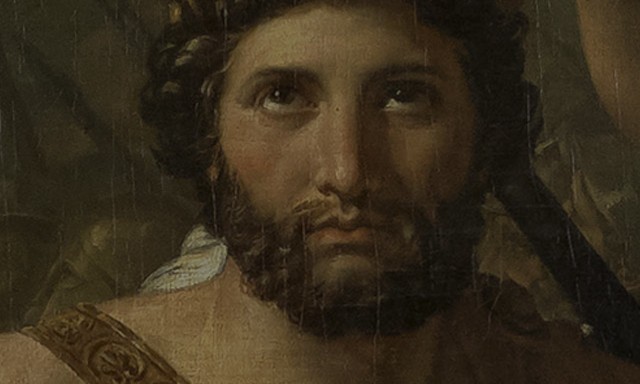CHAPTER CREDITS
The information offered by Herodotus and the literary sources are seconded and completed by archaeological investigations on the battlefields and in the cities captured and destroyed by the Persians.
In Marathon, the excavations brought to light the Soros, i.e. the Tomb of the Athenians who fell in the battle and the layer of the pyre, i.e. the ceremonial fire, with the bones of the dead and scattered broken vessels.
An inscribed stele with the names of the deceased originating from the Erechtheis tribe was also related to the tomb. The stele was originally set on the tomb, but was later transferred by Herod Atticus to his famous villa in Kynouria, and it was discovered in 2000 built in an early Christian building in the region.
One more tomb, in the region of Vranas, was identified by the archaeologists as the Tomb of the Plataeans and the slaves who participated at the battle.
The large number of arrowheads, spearheads and javelins found in Thremopylae, particularly around the hill where the last warriors fell, prove in a unique manner the descriptions of the historical texts.
In Athens, the excavations on the Acropolis revealed the burning of the monuments in 480 BC and brought to light numerous finds, such as architectural parts from earlier temples on the sacred rock and the renowned archaic statues. The hoard, consisting of 62 silver coins dated to 483-480 BC, is of particular importance, as it constitutes a testimony of the silver vein of Lavreotiki, which allowed the construction of the fleet by the Athenians. In the Agora were discovered the remains of the destruction of the public buildings, such as the Basileios Stoa, the courts, the Bouleuterion. Furthermore, the tokens of the plundering of the works of art decorating the public space were found, such as the statues of the tyrannicides, created by the sculptor Antenor.
CREDITS
DISCOVER THE EXHIBITS
Choose one of the objects of the exhibition
EXPLORE THE EXHIBITION
Choose a chapter of the Exhibition
